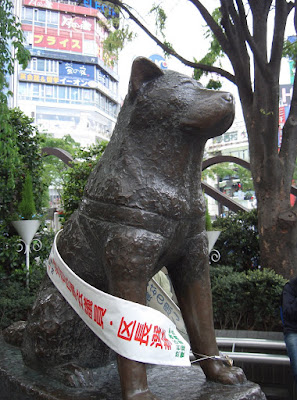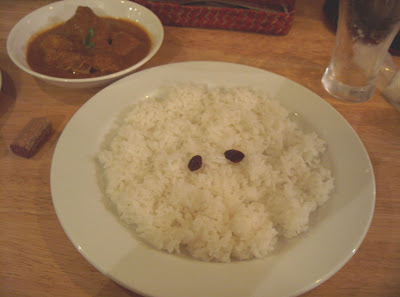
The year was 1925. Every morning, Professor Ueno Eizaburo walked to Shibuya station accompanied by his loyal dog, Hachi, nicknamed Hachiko. Hachiko didn't accompany his master to his teaching job at the Imperial University (now known as Tokyo University), but when Professor Ueno returned every day at 3pm, the dog was always at the station waiting for him.
However, on May 21 of that year, Ueno died of a stroke while at the university. Hachiko went to Shibuya as always to meet his master, but 3 o'clock came and went, and the professor didn't arrive. So Hachiko waited. And waited.

The Akita must have known something was wrong, but nonetheless he returned to the station every day at 3 o'clock to meet the train. Soon people began to notice the loyal dog's trips made in vain to meet his master. Ueno's former gardener, the Shibuya stationmaster, and others began feeding Hachiko and giving him shelter.
Word of his unaltered routine spread across the nation, and he was held up as a shining example of loyalty. People travelled to Shibuya simply to see Hachiko, feed him, and gently touch his head for luck.
The months turned to years, and still Hachiko returned to Shibuya station daily at 3pm, even as arthritis and aging took their toll. Finally, on March 7, 1934 - nearly ten years after last seeing Professor Ueno - the 12-year-old Akita was found dead on the same spot outside the station where he had spent so many hours waiting for his master.


 ... and an endless queue for what?
... and an endless queue for what?









 ... and an endless queue for what?
... and an endless queue for what?








 avocado salad ...
avocado salad ... chicken salad ...
chicken salad ... rice and chicken curry
rice and chicken curry at the curry bar we found an old friend from Okinawa and caught up a bit with a long discussion about the difference between Chinese and Japanese dumplings ... he told us that the gyoza we were so fond of came originally form China but had evolved in Japan after the war
at the curry bar we found an old friend from Okinawa and caught up a bit with a long discussion about the difference between Chinese and Japanese dumplings ... he told us that the gyoza we were so fond of came originally form China but had evolved in Japan after the war



 ... a wall decoration
... a wall decoration


